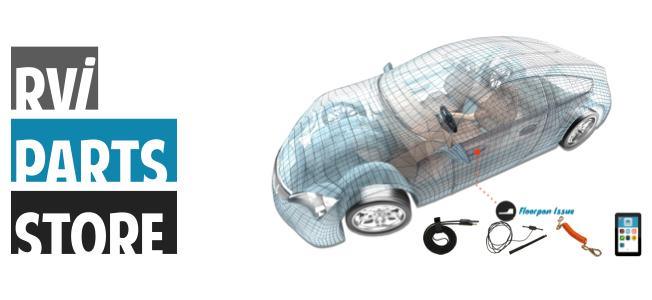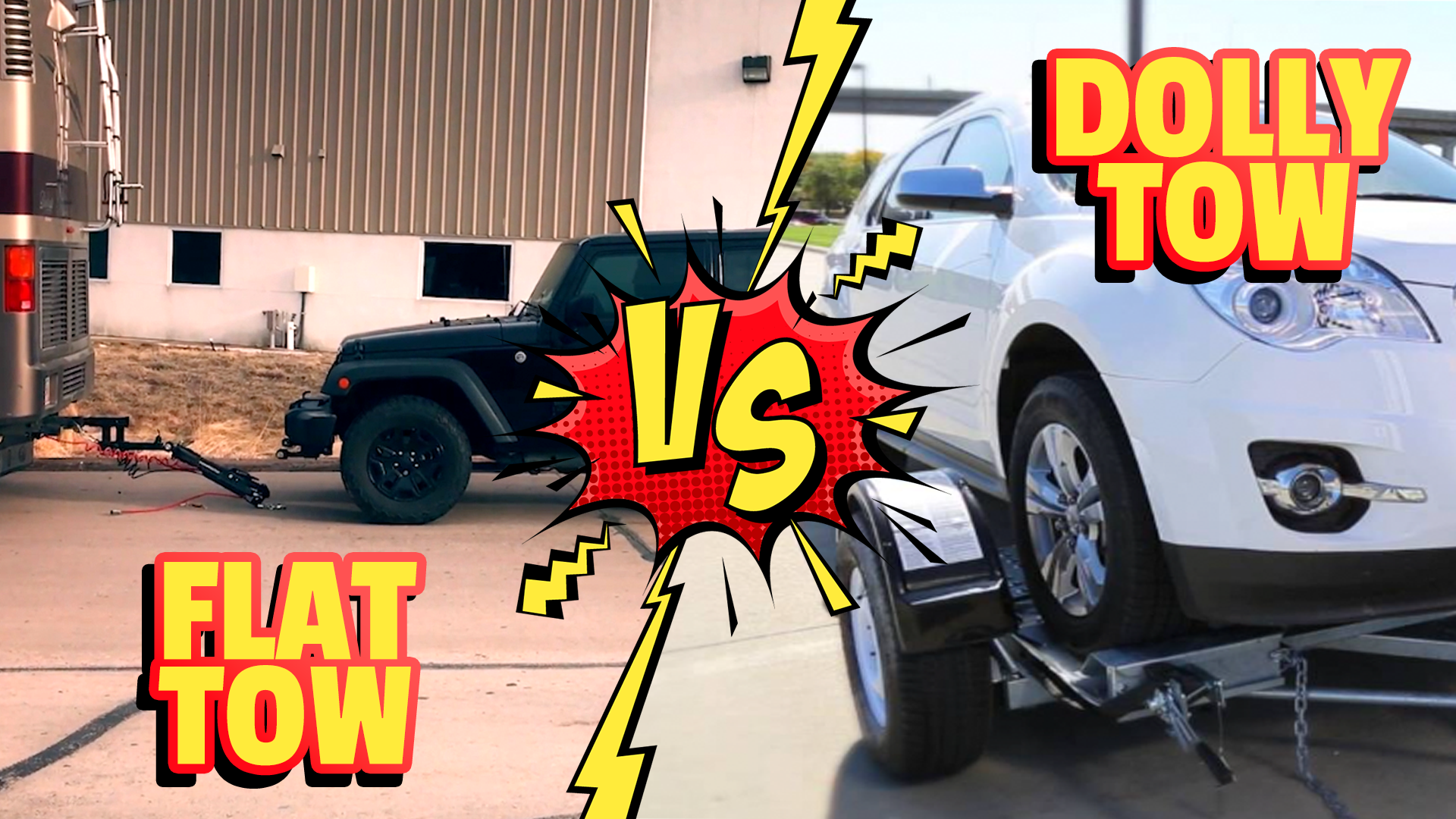There’s more than one way to get where you’re going.
In today’s day and age, we have all sorts of options when it comes to travel: We can book a flight, we can plan a road trip, we can camp, glamp, and just about everything else in between.
Chances are, if you’re reading this, you’ve chosen to travel by RV. But even that carries with it multiple options - chief among those being: Should you dolly tow or flat (dinghy) tow your daily driver behind your motorhome?
VEHICLE COMPATIBILITY
Before we talk about other pros and cons, we have to address the single most important aspect of deciding whether to dolly or flat-tow: Your vehicle. The reality is that many vehicles are only designed to be towed one way or the other. There’s typically no way to change or modify this. That’s why, before you go too far down one particular road, you’ll want to check the Owner’s Manual for your particular vehicle (this is something we would always encourage before attempting to tow your car).
💡 Pro Tip: If you no longer have your original Owner's Manual (or don't have access to it right now), try searching for it on the manufacturer's website. Almost all vehicle manufacturers have online copies of their manuals.
At the back of your Manual, you’ll find an Index (a list of terms used in alphabetical order). Look under ‘R’ for ‘Recreational’ or ’T’ for ‘Towing’ - we’re looking for the ‘Recreational Towing’ section. Once you’ve found it, go to that page number or section. This portion of the Manual will detail which variations of your vehicle can be towed (if any) and how to set the vehicle up in that mode.
Here’s a great example from the Owner’s Manual for the 2023 Jeep Cherokee:

As you can see from this example, the FWD model is dolly-towable but not flat-towable, and the 4x4 2-speed power transfer model is flat-towable but not dolly-towable. This illustrates why this is so important: Not only is towing limited to specific vehicles, but different variations of one vehicle may have vastly different towing requirements.
Always, always, always double-check your Owner’s Manual before you attempt to tow the car.
COST
This is where the playing field starts to level a bit.
For flat-towing, you’ll need an A-frame towbar and baseplate. This equipment can run anywhere from about $700 up to the $2,000 range (the Roadmaster Nighthawk - which is the towbar we recommend - falls right in the middle of this range at $1,000-$1,300, depending on where you buy it from). This is actually cheaper than most dollies - however, you’ll also need to factor in shop install time, which can tack on another $500-$1,000. It’s also important to remember that you’ll need a dedicated braking system when flat towing. For a frame of reference, the RVibrake3 system is $1,595.
So, all told, we’re probably going to land in the $3,000-$4,000 range for a full flat-towing setup. That may seem like a lot - but it’s actually pretty competitive with most dollies.
Buying a dolly from a reputable manufacturer like Demco or Roadmaster is going to run you in the $3,000-$5,000 range, depending on how heavy-duty it is. You could go with something under $3,000 - however, those dollies are typically not made by one of the more established manufacturers and can get very iffy on quality the cheaper you go. With a dolly, you avoid the shop time and supplemental braking system but you have a higher upfront cost.
At the end of the day, you’re going to land in right around the same spot for either system - it’s really just going to come down to personal preference here.
CONVENIENCE
Here, flat-towing has a significant edge.
Provided you have a decent towbar with non-binding latches, hooking up and disconnecting is a breeze. You can do it in a minute or two at most. In most cases, your towbar will fold up in such a way that it’s easy to keep permanently stowed/installed at the rear of the RV - meaning it’s always ready to go.
Dollies, on the other hand, are typically not left attached to the RV on a permanent basis. That means that you’ll be spending a good chunk of time getting the dolly out from wherever it’s stored and hooking it up to your motorhome. On top of that, you have to get your car up onto the dolly, which can also take some time.
All in all, setup and teardown time for a dolly is significantly greater than setup and teardown for a towbar.
WEAR & TEAR
This is a very underrated aspect of the dolly vs. flat-tow debate.
And, again, flat-towing gets the edge. Here’s a couple of reasons why:
- With a dolly, your tires will wear unevenly, leading to drivability issues. With flat-towing, all tires wear evenly.
- The very action of getting your car up onto and off a dolly creates wear and tear on your vehicle. Again, it’s not exactly a simple process to get hooked up, and your car will eventually begin to show that wear.
CONCLUSION
If you can’t tell, we’re big fans of flat-towing. For about the same price as a dolly, you can completely outfit your towed - and the convenience and longevity you get out of a flat-towing setup is far superior.
At the end of the day, though, this all comes down to one thing: Your preference and lifestyle as an RVer. For some people, flat-towing is right. For others, dolly-towing is the best option. Our goal here is simply to arm you with the information you’ll need to make a good decision for you and your family.
Have any additional questions on the recommendations or information in this post? Let us know! We’d love to help.
And, as always, happy RVing!







Leave a comment